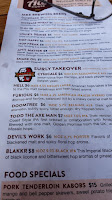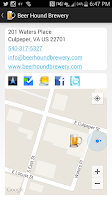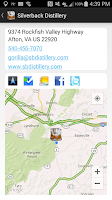 The first half of July's #WineStudio chat focused on Aurelio Montes Sr. and his popular Chilean winery Viña Montes. The second half of the month continued with the same family but segued to his son Aurelio Jr. and the family's venture into Argentina through Kaiken Wines. Their "aim was to make great wines by combining the exceptional conditions of the Mendoza region with the talents of professionals from Argentina and Chile". The Kaiken name refers to this crossing of the Andes as does the Caiquen birds every migratory season. The winery was established in 2001, growing from two wines to five separate brands today. Our tasting focused on two of these brands, the Terroir Series and the Kaiken Ultra.
The first half of July's #WineStudio chat focused on Aurelio Montes Sr. and his popular Chilean winery Viña Montes. The second half of the month continued with the same family but segued to his son Aurelio Jr. and the family's venture into Argentina through Kaiken Wines. Their "aim was to make great wines by combining the exceptional conditions of the Mendoza region with the talents of professionals from Argentina and Chile". The Kaiken name refers to this crossing of the Andes as does the Caiquen birds every migratory season. The winery was established in 2001, growing from two wines to five separate brands today. Our tasting focused on two of these brands, the Terroir Series and the Kaiken Ultra. With the 2015 Kaiken Terroir Series Torrontés ($17, 13.5%), the winery focuses on the Salta wine region - one of the highest in the world. We are talking about 4,500 feet above sea level. Aurelio Jr. mentioned that working at such extreme altitudes presents challenges every year, but the specific location, the Cafayate Valley, has 320 sunny days per year and a large nightly diurnal temperature swing. The vines for Torrontés are over 80 years old but this wine is fresh with a powerful aroma of flowers, apricots and nuts. It then transitions to a velvety creamy mid-palate, finishing with plenty of acids and a hint of saline. Many of us likened it to a Virginia Viognier, although this Torrontés has way more acidity. A fabulous wine.

We returned to Kaiken's Mendoza roots with the 2012 Kaiken Ultra Malbec ($24, 14.5%). The region is not as elevated as Salta, but still pretty hefty at 2,000 to 3,500 feet above sea level. The region accounts for almost 2/3 of Argentina's wine production and was that county's first appellation. Like the Torrontés, this Malbec has plenty of fresh acids that mingle with the red cherry, tobacco, and spicy flavors. There's also plenty of tannins, I got scolded for mentioning that the wine crippled the tongue - but the lively acids alleviate most of the puckering. This one should go down into the cellar - but it's definitely drinkable now.








































